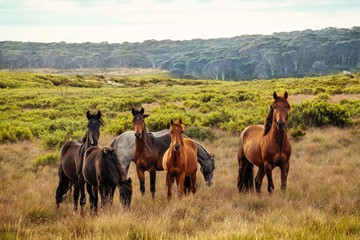Nature and livelihoods are on the line due to the pausing of feral animal control in all NSW national parks.
The Invasive Species Council is calling on the NSW Government to resume feral animal shooting across all NSW National Parks. The shooting pause has been underway for more than 5 weeks and is putting ecosystems, wildlife and agriculture at risk.
A pause on pest control in Kosciuszko National Park was announced on 2GB by Environment Minister Griffin on 16 September to allow a review into an allegation that an aerial deer cull last summer potentially occurred near park users. The Invasive Species Council now understands this pause was in fact applied state-wide to all National Parks and includes all shooting programs to control feral animals – including pigs, deer, goats and horses.
‘A state-wide ban on all shooting activities to remove invasive species from nationalparks is deeply concerning,’ Invasive Species Council advocacy manager Jack Gough said.
‘With this wet weather, we know feral animal numbers are exploding across our national parks. More feral horses, pigs and deer trashing our parks and adjoining areas will be a disaster for our native wildlife and ecosystems.
‘This ban will also be alarming for farmers concerned about foot and mouth disease preparedness as feral pigs and deer will be major spreaders of the disease if it reaches our shores.
‘Of course, safety is paramount, however it’s ridiculous that one allegation on one shock jock radio station of an incident more than six months ago has shut down pest management in parks across the state.
‘The NSW Government has no excuse for the scale of this ban and the Environment Minister must overturn it and let National Parks staff continue to do their jobs safely, professionally and humanely.
‘When it was announced, Minister Griffin said the pause would only last for ‘a couple of weeks’ until a review was completed into the allegation, but it has now been more than a month and we are in the dark about when the ban will be lifted.
‘Invasive species are the leading driver of animal extinctions in Australia. Millions of feral deer, pigs, horses and goats are pushing our wildlife to the edge. They are eroding streams, stopping forests from regenerating and outcompeting native animals.
‘To protect our precious places from hard-hooved invasive species, we need to use all tools in the toolbox and that includes ground and aerial shooting,’ he said.









